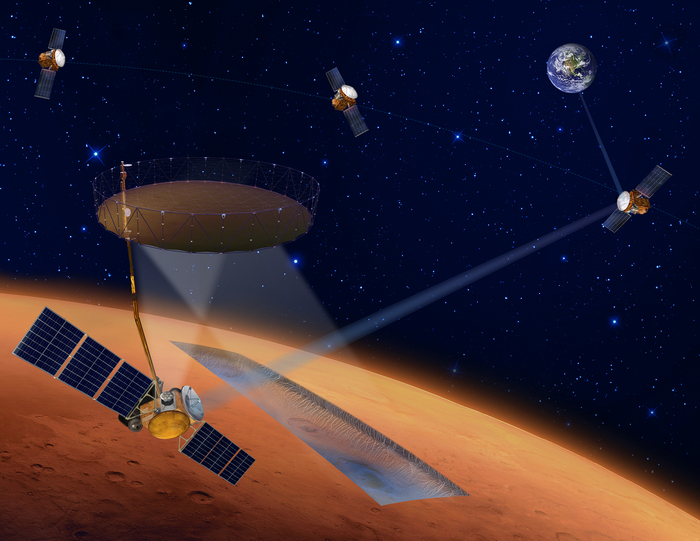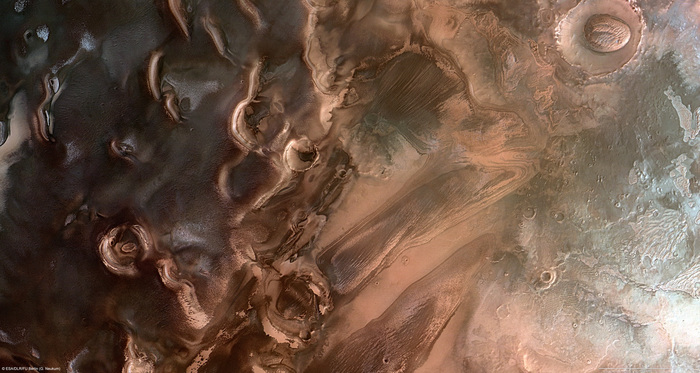After 19 years from its launch, which took place on June 2, 2003, the Mars' water seeker on board the Mars Express satellite of the European Space Agency (ESA) finally receives an update: it is the Italian instrument Marsis, managed by 'National Institute of Astrophysics (INAF) and fully funded by the Italian Space Agency (ASI), famous for the discovery of traces of liquid water on the Red Planet, including a possible saltwater lake buried under 1.5 kilometers of ice in the region southern polar.
The software upgrade will allow Marsis to look beneath the surface of Mars and its moon Phobos in more detail than ever.
The instrument located aboard Mars Express sends low-frequency radio waves to the planet using its 40-meter-long antenna.
Most of these waves are reflected from the surface, but some travel through the crust and are reflected when they meet the boundary between two layers of different materials, such as rock, ice and water.
By examining the reflected signals, researchers can then build a map of what lies beneath the surface of Mars, down to a depth of a few kilometers, and study its composition.
The software update, designed by Inaf and the Italian company Enginium, includes a series of improvements for signal reception and data processing on board, in order to increase the quantity and quality of scientific data sent to Earth .
“So far we have relied on a complex technique that, by storing a lot of high-resolution data, filled the instrument's internal memory very quickly,” explains Andrea Cicchetti, Marsis operations manager at INAF, who led the development of the upgrade.
“By discarding the data we don't need - adds Cicchetti - the new software allows us to keep Marsis on for much longer and to explore a much larger area at each step”.










